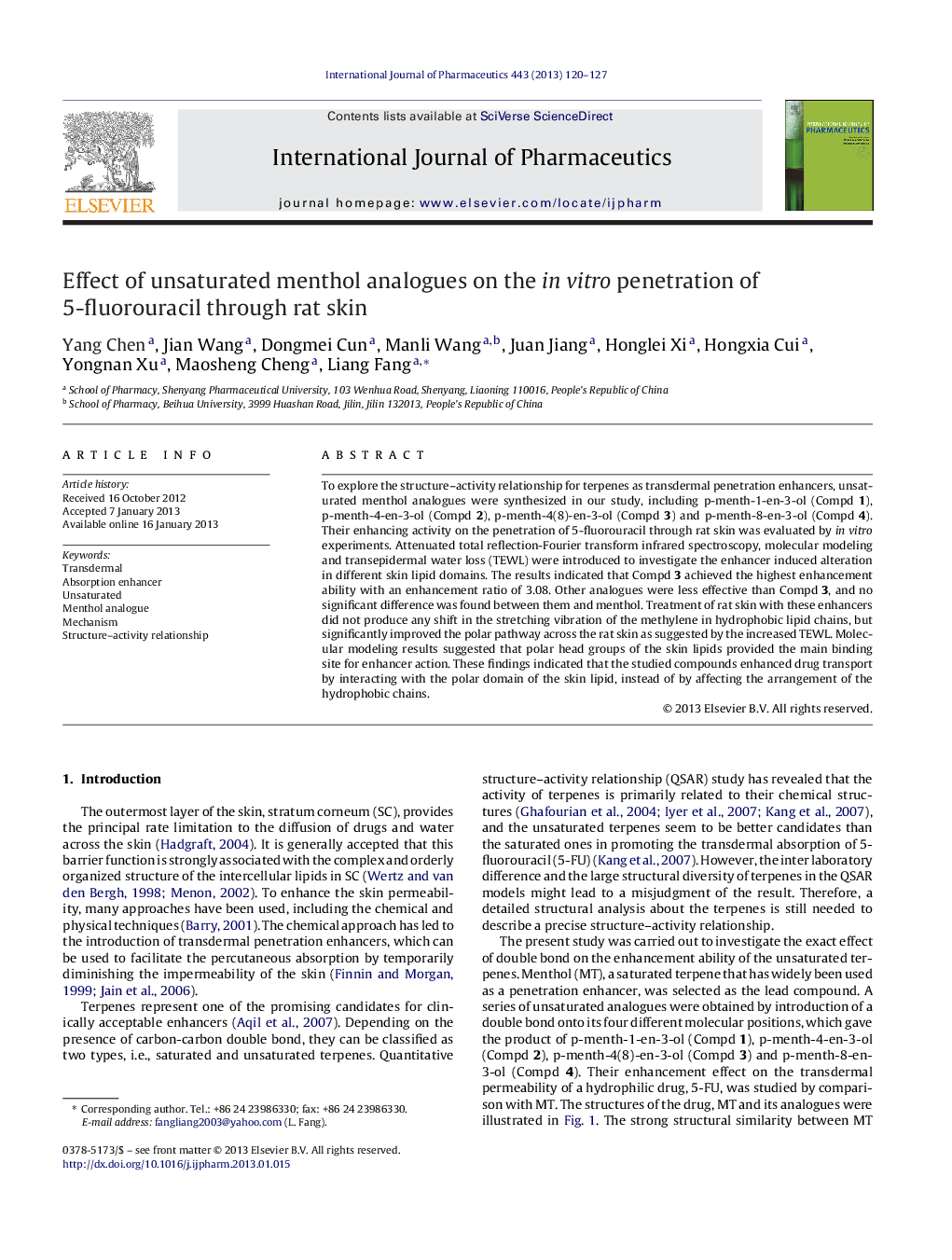| Article ID | Journal | Published Year | Pages | File Type |
|---|---|---|---|---|
| 2502603 | International Journal of Pharmaceutics | 2013 | 8 Pages |
To explore the structure–activity relationship for terpenes as transdermal penetration enhancers, unsaturated menthol analogues were synthesized in our study, including p-menth-1-en-3-ol (Compd 1), p-menth-4-en-3-ol (Compd 2), p-menth-4(8)-en-3-ol (Compd 3) and p-menth-8-en-3-ol (Compd 4). Their enhancing activity on the penetration of 5-fluorouracil through rat skin was evaluated by in vitro experiments. Attenuated total reflection-Fourier transform infrared spectroscopy, molecular modeling and transepidermal water loss (TEWL) were introduced to investigate the enhancer induced alteration in different skin lipid domains. The results indicated that Compd 3 achieved the highest enhancement ability with an enhancement ratio of 3.08. Other analogues were less effective than Compd 3, and no significant difference was found between them and menthol. Treatment of rat skin with these enhancers did not produce any shift in the stretching vibration of the methylene in hydrophobic lipid chains, but significantly improved the polar pathway across the rat skin as suggested by the increased TEWL. Molecular modeling results suggested that polar head groups of the skin lipids provided the main binding site for enhancer action. These findings indicated that the studied compounds enhanced drug transport by interacting with the polar domain of the skin lipid, instead of by affecting the arrangement of the hydrophobic chains.
Graphical abstractFigure optionsDownload full-size imageDownload high-quality image (253 K)Download as PowerPoint slide
